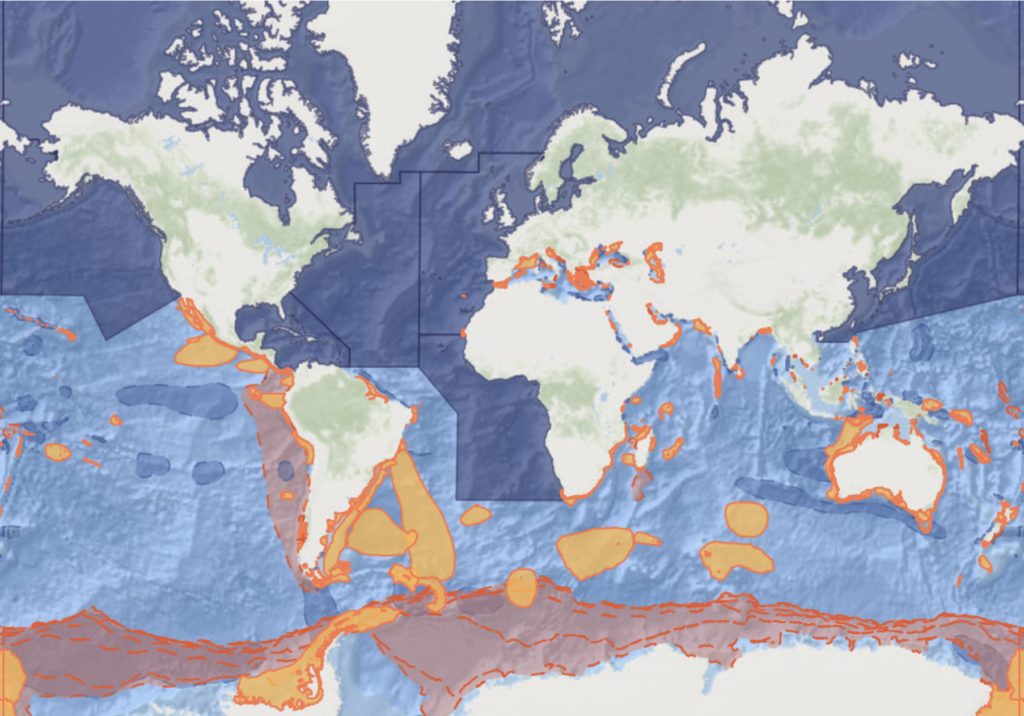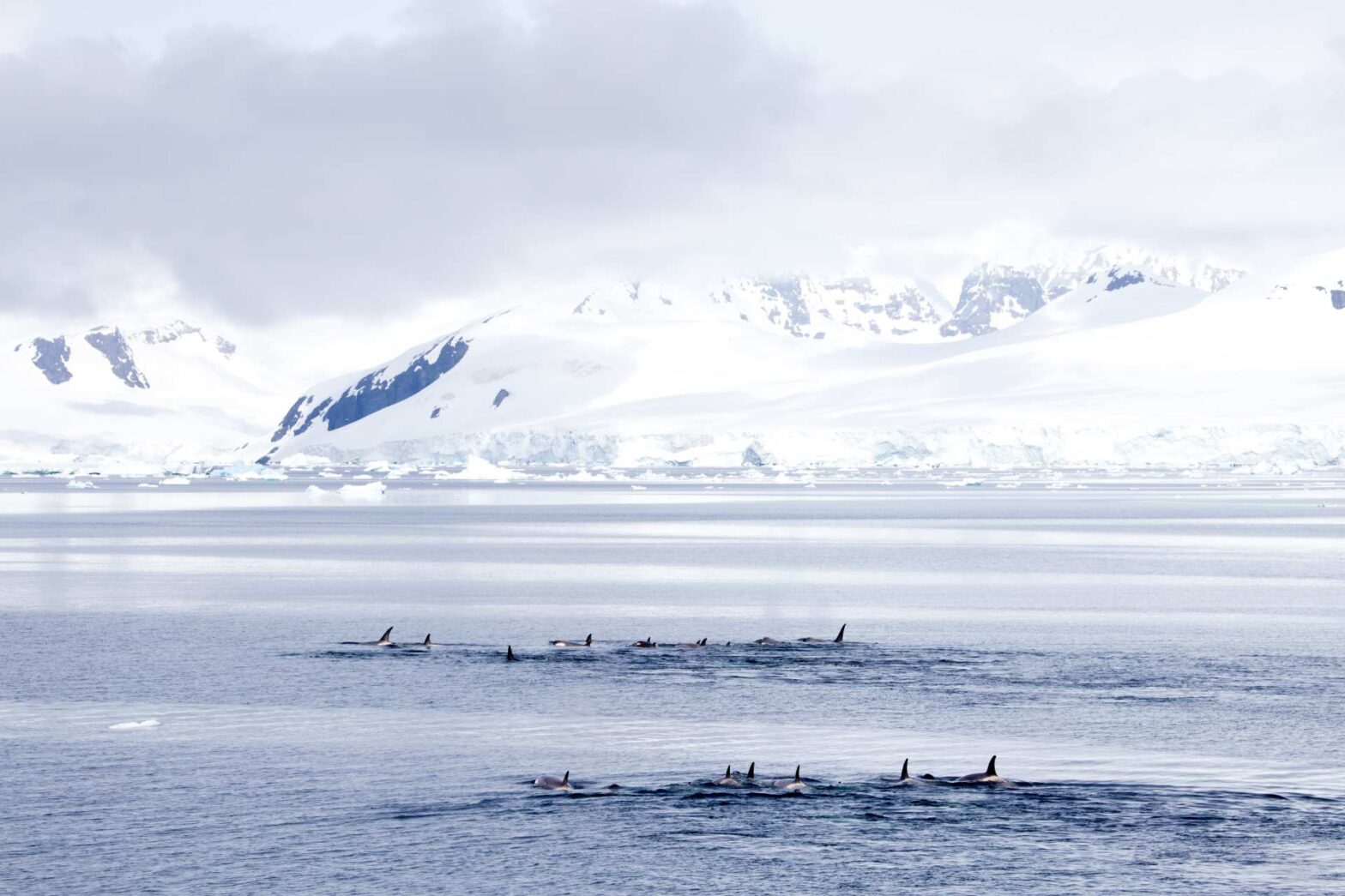Important Marine Mammal Areas: 72% of the Ocean examined
Ten years ago, the IUCN Marine Mammal Protected Areas Task Force was launched at the International Marine Protected Area Congress (IMPAC3) in Marseille. At that time, it was a distant dream to establish a scientific process, drawing on masses of published and unpublished data, to bring together disparate groups of whale and other marine mammal scientists to identify the most important habitats of these typically wide-ranging species. To date, the Task Force, currently with more than 60 members from around the world, has examined 72% of the ocean and identified 242 Important Marine Mammal Areas (IMMAs).
Each IMMA has gone through an expert nomination process from scientists followed by peer review. Nearly 300 scientists have been involved in one or more of the week-long workshops held now in 10 regions, thereafter, becoming IMMA ambassadors, the keenest of which volunteer as IMMA coordinators for their region.
IMMAs are defined as discrete portions of habitat, important to marine mammal species, that have the potential to be delineated and managed for conservation. They are not legal designations but independent, peer-reviewed assessments based on a set of criteria supported by scientific data. In essence, however, IMMAs are a hands-on tool that facilitates conservation.
Since 2022, through the Kunming-Montreal Global Biodiversity Framework, countries have agreed to protect 30% of the ocean by 2030. At the same time, the Biodiversity Beyond National Jurisdiction (BBNJ) Treaty is now in the process of gaining support from countries to protect biodiversity in international waters.
“The IMMAs initiative is of global significance and provides the scientific foundation for adopting and implementing much needed conservation action, noting the mounting threats to the world’s marine mammal populations and their habitats” says Mark Simmonds, Director of Science at OceanCare. Adding, “In recent years we have seen many signals coming from the relevant scientific community indicating grave concerns about the survival of many marine mammal populations, including one from more than 360 scientists calling for urgent action for the conservation of whales, dolphins and porpoises. IMMAs are a practical and enduring response to such concerns and will help to build the resilience of populations in the face of many threats.”
IMMAs have been recognized by the 130 Parties to the Convention for the Conservation of Migratory Species, among others, and should now be used by regulators, decision-makers, private sector and other stakeholders around the world.
To date, nearly 600 downloads of the IMMA shape files and associated information have been accessed by users around the world. IMMAs are now in the process of being used in spatial planning in Malaysia, the creation of marine protected areas in Bangladesh and Vietnam, by the US Navy to avoid using low-frequency sonar near IMMAs, and in the establishment of Particularly Sensitive Sea Areas (PSSAs) under the International Maritime Organisation (IMO) in the western Mediterranean where sperm and fin whales get hit by ships. Several shipping companies transiting south of Crete and across the Indian Ocean are also using IMMAs for route planning on a voluntary basis to reduce the risk of hitting large whales.
OceanCare is, for example, making use of IMMAs when identifying high-risk areas for collisions with vessels to develop concrete guidance on reducing the risk of ship strikes of large whales.
The total surface area for all 242 IMMAs is 33.3 million square kilometers:

The e-Atlas is showing maps of all the IMMAs and Aoi identified to date. And a core objective of the IMMAs initiative is now to examine the remaining 28% of the ocean.
The work of the Task Force for its IMMA initiative has been financed mainly by the International Climate Initiative (IKI) of the German Federal Ministry for the Environment, Nature Conservation, Building and Nuclear Safety (BMUB) as part of the Global Ocean Biodiversity Initiative (GOBI). Individual regions have been funded by the French Biodiversity Agency (OFB) through the IUCN Marine and Polar Programme and by the Mava Foundation and currently by the Water Revolution Foundation. Funding in the preparatory stages came from the Animal Welfare Institute and Pacific Life Foundation, with additional funding in later stages also from OceanCare, Natural Resources Defense Council (NRDC), the Brazilian Instituto Baleia Jubarte (Humpback Whale Institute) and the Tethys Research Institute.
Further information: https://www.marinemammalhabitat.org
Scientists’ Statement of Concern: https://www.mammalresearchinstitute.science/whale-unit
